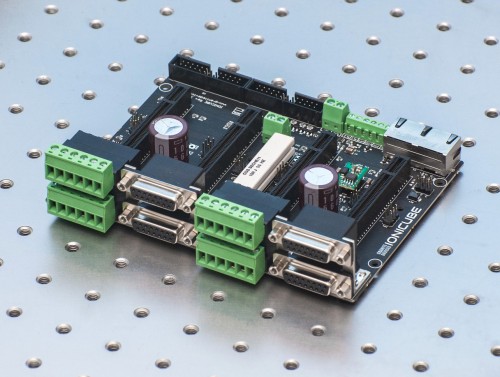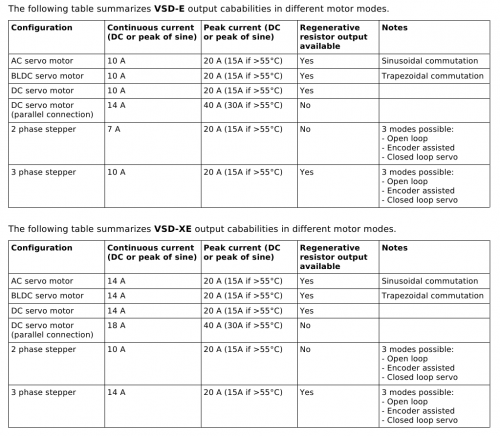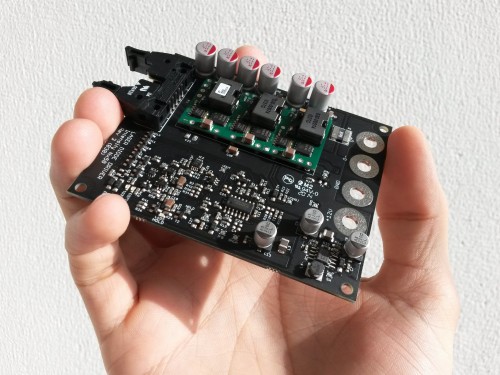The 3-phase magic trick has been implemented in the firmwares of Argon and VSD-E drives. Argon firmware 1.4.0 contains also fixes for other recently discovered issues. Check them out from Wiki:
I hope you find them useful!

The 3-phase magic trick has been implemented in the firmwares of Argon and VSD-E drives. Argon firmware 1.4.0 contains also fixes for other recently discovered issues. Check them out from Wiki:
I hope you find them useful!
We have started development of Mach4 motion control plugin that supports SimpleMotion V2 bus. This means that ARGON and IONI drives can be controlled by Mach4 without any extra hardware. It just needs the SMV2 USB adapter and drives. The plan is also to allow control of few I/O signals through that plugin.
The plugin will be fully open source and available on GitHub if Artsoft sample plugin code license allows that (will be determined later).
Granite Devices will be on Christmas holiday for the next week. I wish merry Christmas to everyone following this blog! :)
No words needed, but I write anyways! Today is the day when first production candidate IONI drives arrived. Few minutes after arrival, the first motor was spinning with great success.
So far everything is looking very good. Someone please come and tie me to the chair so I can stop floating around!
As title says, the former IONISPHERE motherboard for IONI drives is now renamed as IONICUBE which describes the shape better :) Thanks you João for sharing the idea in comments, you will get one set for free once ready!
Changes from the prototype are mainly

Factory made IONICUBE on a nice steel table with some honey comb vibration dampening structure inside
Now we’re just waiting IONI prototypes to arrive (expecting on the next week). Feels like Christmas is early this year :)
During the past year we have shipped VSD-E drives with same higher current limits than the former VSD-XE model as we were confident that it would not cause any reliability issues. And it has not, as expected, no issues have been reported!

Comparison of the VSD-E and VSD-XE output current limits. With the new firmware, VSD-E gets the same ratings as VSD-XE.
Today we made a new firmware version V210 publicly available for VSD-E-160 drive that increases VSD-E’s output current limits to match VSD-XE ratings. We hope this helps people driving large motors with VSD-E.
Along motor controllers, we have been designing a laser diode driver. Laser diode driver, or LDD, is basically a current regulator that is used to drive constant or pulsed current to a semiconductor diode that emits laser light.

Intensify Nx50 laser diode driver delivers continuous current of 50 A at exceptional 95% efficiency.
The story behind this is the fact that I have been working close to laser diode industry where I get understanding of how laser diodes are utilized and controlled, as well as expertise of precision current control from motor drives. Combining these two makes it almost trivial to make a new kind of LDD that has never seen before.
The product is now finished and it’s called Intensify Nx50. It has unique ability to be stacked to increase output rating. Single board outputs current between 0 – 50 A and voltage between 0.8 – 5.0 V. Two of them output 0 – 100 A / 0.8 – 5.0 V and three 0 -150 / A 0.8 – 5.0 V etc.
Funny observation from testing of 150 A driver in pulsed mode is that the thick cables tend to physically move due to magnetic force generated by flowing current. When current flows in parallel conductors in opposite directions, cables repel each other. It takes hefty amount of current to feel and see it :)
Good news! The very first fully assembled ION servo drive boards have arrived. I jumped straight to programming the thing. Few parts of code have been already ported from Argon and everything has worked flawlessly so far.
The drive is equipped with ARM Cortex M4 processor with hardware floating point unit (FPU). I ran small test of FPU performance and found out that simple floating point arithmetic operations execute 20-30 times faster compared to non-FPU code. This means, all control code can be written with floating point math yielding ultimate precision and dynamic range without sacrificing servo bandwidth.